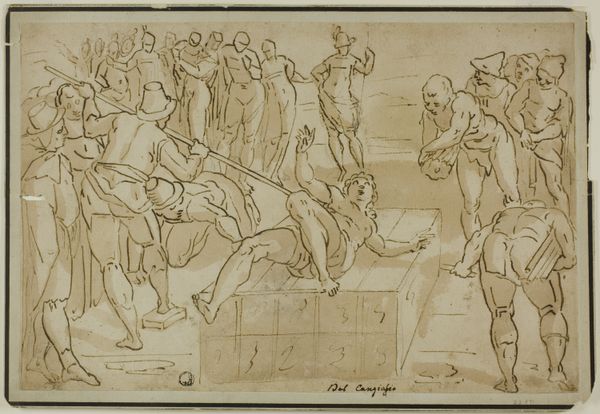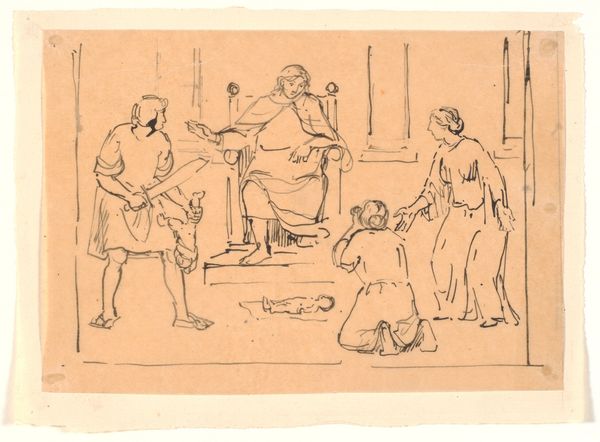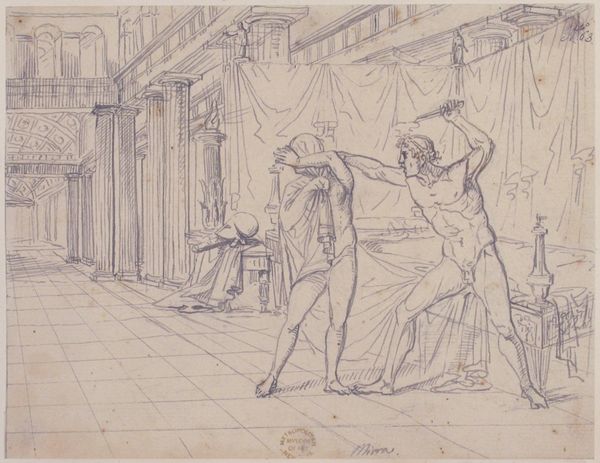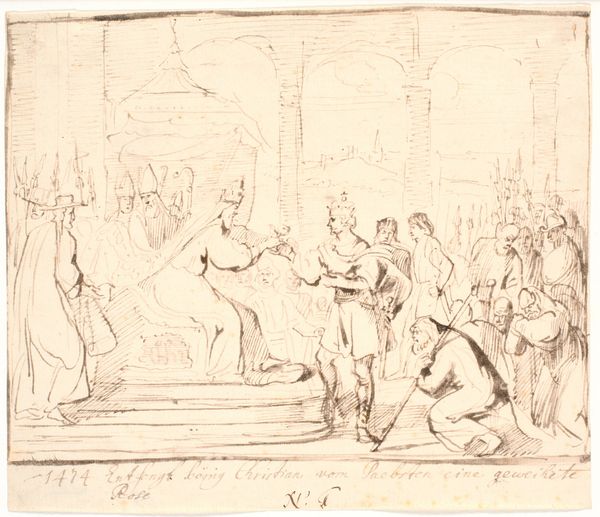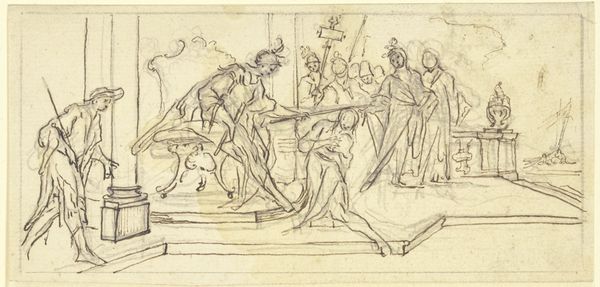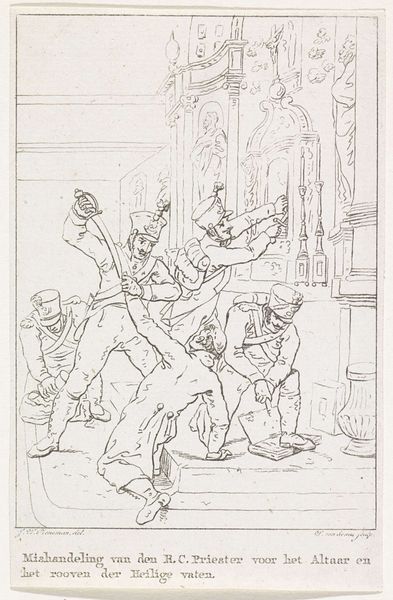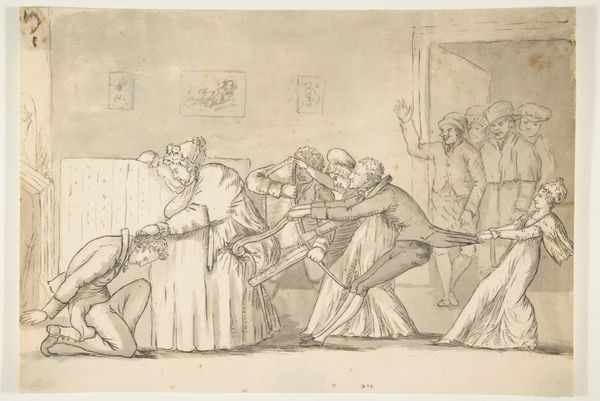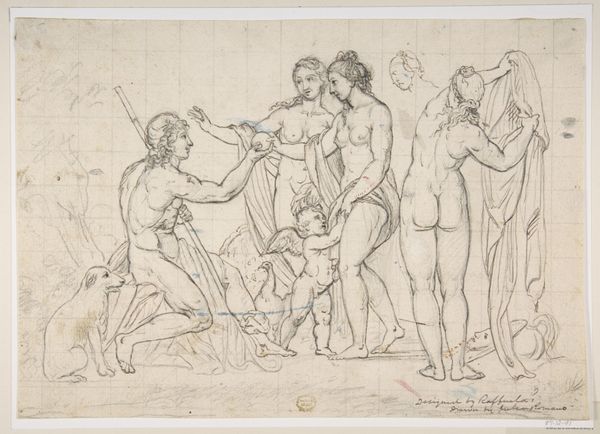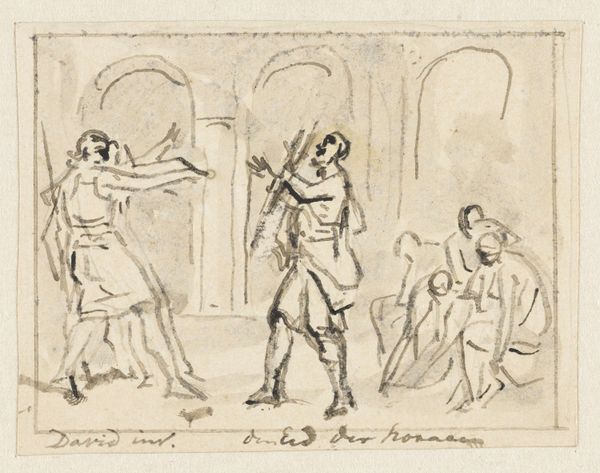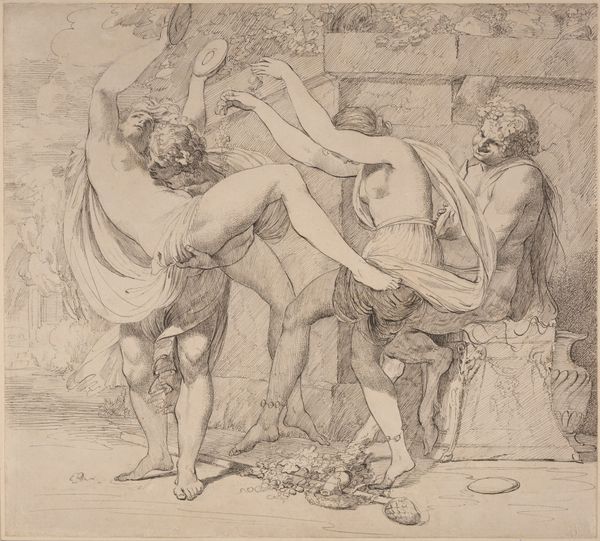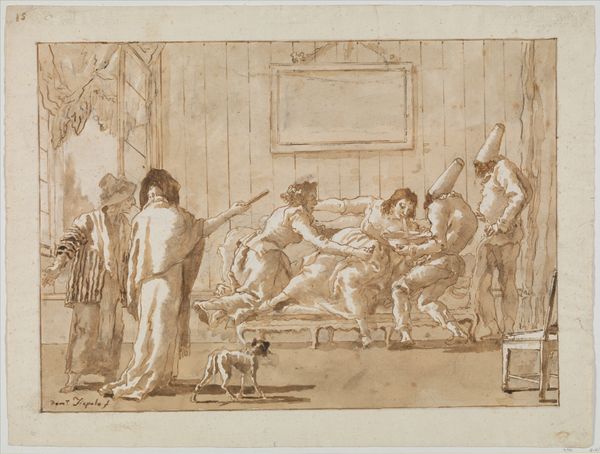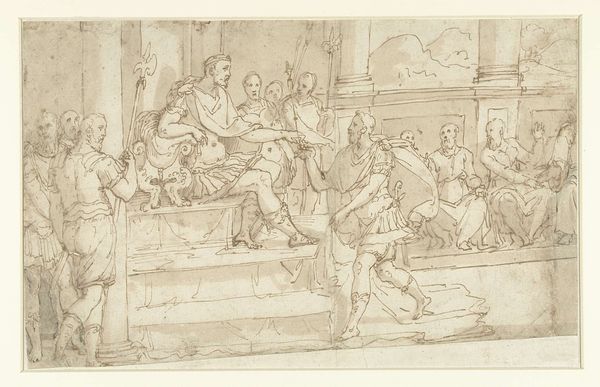
The Clemency of Augustus (recto); Knight Restraining a Female Figure (verso) 1782 - 1792
0:00
0:00
drawing, print
#
drawing
# print
#
classical-realism
#
figuration
#
female-nude
#
line
#
history-painting
#
academic-art
#
nude
#
male-nude
Dimensions: 13 1/4 x 15 1/16 in. (33.7 x 38.3 cm)
Copyright: Public Domain
Curator: Ah, this sketch by François-André Vincent! It's titled *The Clemency of Augustus*, dating back to the late 18th century. A recto-verso drawing, it presents two distinct scenes, offering us a peek into the artistic process. What strikes you first? Editor: The sheer... theatricality of it! The figures are posed with such deliberate exaggeration. It’s a study in idealized forms, yes, but the arrangement feels more like a stage tableau than a spontaneous moment. Curator: That theatricality speaks volumes. Consider the era! This work aligns with the renewed interest in classical ideals during the late 1700s, fuelled by discoveries at Herculaneum and Pompeii. The architecture in the background emphasizes those Roman virtues. Augustus, shown forgiving, embodying clemency—it was potent imagery, then as now, for a ruler. What could this have suggested at a moment just before the revolutionary tremors that transformed France? Editor: So, beyond pure aestheticism, the image has this potential layer of political meaning, advocating for measured rule rather than revolution or violence? Yet I’m also captivated by the bare line-work; the minimal shading lends the piece an almost haunting quality. It is somehow unresolved and incomplete. Are there symbolic echoes that you, with your rich awareness of visual symbols, perceive? Curator: Absolutely. The symbolism permeates even the details of its draftsmanship. The way figures on the left side reach for him is allegorically about the ideal virtues embodied by Roman law and authority. The scene attempts to invoke ideas about order versus chaos in a direct, political way. The artist's use of classical tropes becomes an exercise in exploring concepts of how a state and its leadership should properly act. But I do agree, that it is interesting in its state of "completion," or not. The reverse side provides more figurative studies for an unidentified scenario, too! Editor: So the image, both front and back, in their suggestive visuality, present an interesting set of puzzles regarding political theory, historical symbolism and social ideals. I’ll be pondering on this visual exercise in historical authority for some time to come! Curator: Indeed. A classical lesson, filtered through a pre-Revolutionary lens. Compelling to unpack, to say the least!
Comments
No comments
Be the first to comment and join the conversation on the ultimate creative platform.
